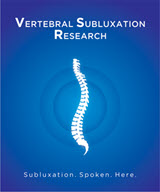New Research Sheds Light on Chiropractic and Ataxia

CLICK HERE to review the study
“Research is revealing that there is a relationship between abnormalities in the spine, the nervous system and the brain” stated Dr. Matthew McCoy, a chiropractor, public health researcher and editor of the journal that published the study. “Basic science research shows that the proper development and function of the brain relies on proper structure and movement of the spine from an early age.”
According to McCoy “The nervous system needs the constant stimulation of movement in order to develop and function properly. Abnormal position or movement of the spinal vertebra can develop and this can lead to nerve interference. It is this interference, called vertebral subluxations, that chiropractors correct.”
Research has shown not only that the developing brain relies on normal structural integrity and joint movement, but that complex neurochemical communication and pathways involved in helping humans to adapt to their environment and even to “feel good” are tied into spinal biomechanics and their related neurological pathways.
“It makes perfect sense when you think about it” stated Dr. McCoy. “The brain constantly needs and wants to know where our body is in space. If there is interference with the neurological communication between the spine and the brain all sorts of malfunctions can occur.”
The 64-year-old woman in this research had coordination issues that were getting progressively worse over two months. She was diagnosed with progressive ataxia, unsteady gait, vertigo, migraines, and thyroid problems. She could not stand or walk and therefore was wheelchair bound. She also had dizziness, high blood pressure, high cholesterol and heart disease. All her lab testing and imaging came back negative. Her symptoms interfered significantly with her activities of daily living as she could not groom herself due to the inability to lift her arms to comb her hair. She could not go to work, clean her house, cook, or put her shoes on.
The chiropractor examined her and found structural shifts in her neck, mid back, and sacrum. Leg weakness, pain, decreased range of motion, and muscle spasms were noted. These structural shifts can lead to obstruction of the nerves and it is this obstruction, called vertebral subluxations, that chiropractors correct.
Following chiropractic adjustments, she experienced resolution of ataxia. She regained her ability to stand and walk, she was able to return to work and resume her daily activities.
The study’s author called for additional research to investigate the clinical implications of chiropractic in this population.
Contact Information:
Matthew McCoy DC, MPH
Annals of Vertebral Subluxation Research
https://www.vertebralsubluxationresearch.com/vertebral-subluxation-research-1/
support@vertebralsubluxationresearch.com

Blogs
- The Chiropractic Cartel: A Look Back at Bias in Accreditation and its Imact on Today's Profession
- Inside Montana's Chiropractic Monopoly: ACA & MCA's Brazen Board Takeover
- Concerns Grow About Control of the NY State Chiropractic Board by the ACA - Use of X-ray in NY Under Threat
- Reproductive Health Information and Chiropractic Care: Navigating New Privacy Regulations
- Navigating Substance Use Disorder (SUD) Consent: What Chiropractors Need to Know













